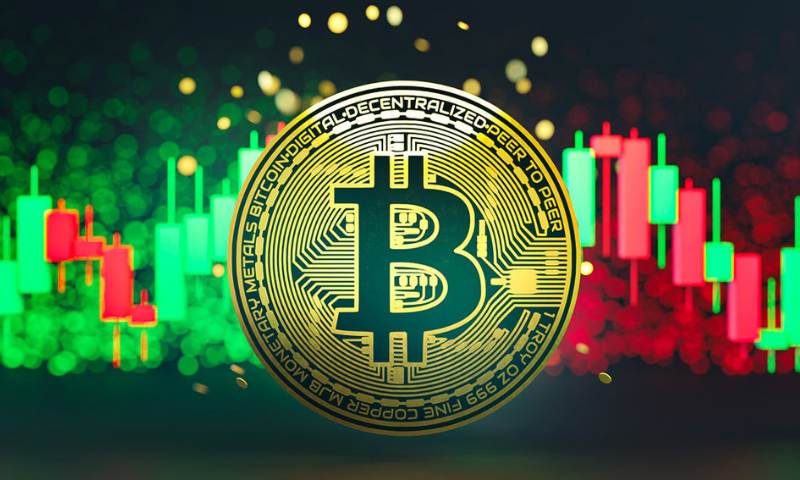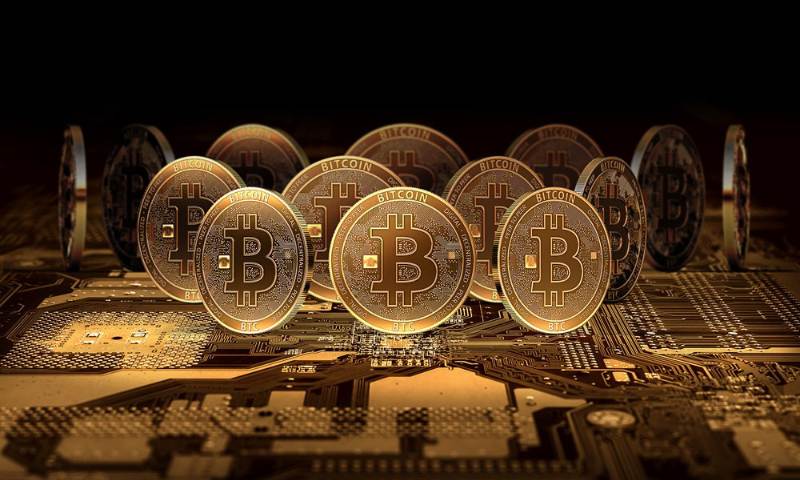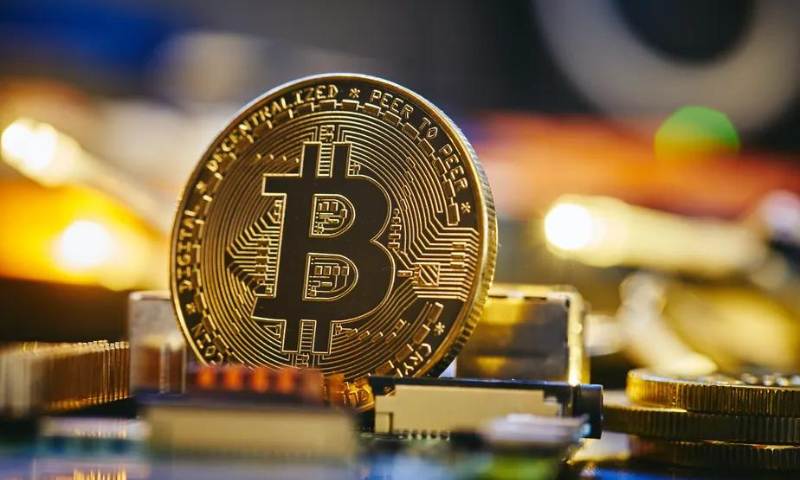Dive into the realm of Bitcoin: A Peer-to-Peer Electronic Cash System. A digital titan stands tall in the world of finance. It’s a tool that flips the script on traditional money handling. Imagine sending cash straight to someone with no middle man. That’s Bitcoin’s promise. In this deep dive, I’ll unveil the clever tech and the bold vision that fuels Bitcoin. You’ll learn about its rock-solid backbone and explore how it runs circles around old-school banks. Curious? Join me on this whirlwind tour to see why Bitcoin is more than just internet money—it’s a revolution.
The Genesis of Bitcoin: Satoshi Nakamoto’s Vision
Deciphering the Satoshi Nakamoto Whitepaper
Satoshi Nakamoto brought us Bitcoin in 2008. The whitepaper was clear yet groundbreaking. It outlined a system for digital money that didn’t need banks. Instead, it relies on a peer-to-peer network to verify all transactions. This network forms the backbone of Bitcoin’s security and trust.
People all over the world can use Bitcoin to send money straight to others. This cuts out the middleman, and it’s what Satoshi dreamed of. It benefits everyone. You pay less in fees, and you don’t have to trust a bank to handle your cash.
Pioneering the First Digital Currency System
Bitcoin was the first to turn the dream of digital currency into reality. Unlike early digital money ideas, Bitcoin succeeded. It combines cryptography, a blockchain ledger, and a decentralized setup.
The blockchain is a list of all Bitcoin transactions. It’s public, so everyone can help keep it true and secure. Think of it like a huge, open book. This book keeps growing as people make more Bitcoin transactions. Miners, using powerful computers, solve hard puzzles to add new pages to the book. They receive new bitcoins as a thank you for their work.
People store bitcoins in digital wallets. Wallet security is vital because it protects your money from theft. When you want to send bitcoins, you sign off the transaction with a private key. It’s like a secret code that says, “Yes, this is mine.”
Bitcoin’s system tackles common issues with trust and fraud in finance. It lets us make peer-to-peer transactions quickly, and without big fees. Bitcoin changes how we think about money. Its success has paved the way for other crypto assets and decentralized finance products. Now, many try to follow in Bitcoin’s footsteps.
Despite its ups and downs, Bitcoin still thrives. Its value can swing a lot, which makes some see it as an investment chance. It’s true, buying Bitcoin is a risk, like any investment. Yet, many believe its benefits outweigh the risks.
Remember, though, where many see opportunity, others may worry. Some are nervous about Bitcoin’s legal side. And others are thinking about how much energy Bitcoin mining uses. Yet, as the technology improves, so does Bitcoin’s efficiency. It’s all part of the journey for this pioneering digital currency system.
Satoshi Nakamoto’s vision was simple but powerful. A world where you can send money straight to someone else. No waiting, no big fees, no asking permission. Just a free, open system for all. That’s what makes Bitcoin a peer-to-peer electronic cash powerhouse. And it’s just getting started.
The Technical Backbone: How Blockchain Powers Bitcoin
The Intricacies of the Blockchain Network
You’ve likely heard the buzz around Bitcoin. But at its core, what makes it tick? The answer is blockchain technology, a smart way to keep track of all Bitcoin deals. Picture it like a chain of digital “blocks”. Each one stores a list of who sent and got bitcoins, and how much. This chain never ends and is safe for everyone to see.
Blockchain is the heart of Bitcoin. It’s like a ledger, but not in some dusty library. It exists out in the open, shared across a network of computers. Every time someone sends or gets Bitcoin, that action goes onto the blockchain. This keeps Bitcoin honest and everyone on the same page.
The blockchain network lives all over the world, on loads of different computers. This spread-out approach helps keep Bitcoin safe. If someone tries to mess with one part of it, the other parts would catch the cheat. That’s because they all hold copies of the same blockchain.
As people buy and sell goods with Bitcoin, the blockchain grows with new blocks. When a new block hooks onto the chain, it’s there for good. Changing it would mean altering every block after it, a job too huge for sneaky hackers. This is how blockchain makes Bitcoin a trusty choice for buying and selling without big banks in the middle.
Cryptography in Bitcoin: Ensuring Security and Trust
When folks talk about Bitcoin, they use words like “encryption” and “cryptography”. These big ideas are all about keeping your coins safe. But how does Bitcoin do it? With a super-smart code called the cryptographic hash function. Each transaction gets a unique code that’s tough to fake but easy to check.
Cryptography is like putting a lock on your bike. But instead of a padlock, Bitcoin uses math to secure your digital cash. This math lock ensures that who you send bitcoins to, and who sends them to you, stays private. And just like knowing a secret bike lock combo, only you can unlock your Bitcoin wallet to send money.
Your Bitcoin wallet is where your coins hang out. Keeping it secure is prime. Imagine it’s a house; cryptography is the alarm system. It’s a mix of numbers and letters that’s tough to break into. Even if someone swipes your computer, they can’t get your bitcoins without cracking this code.
Cryptography in Bitcoin does two big jobs. First, it signs off on transactions, saying “Yes, this is legit”. Next, it puts together new blocks to add to the blockchain. It’s like a library stamp that says, “This belongs here”. It makes sure every Bitcoin trade is safe and fits into the blockchain just right.
So there you have it. Blockchain and cryptography form the backbone of Bitcoin. They work hand in hand to keep your digital cash safe from thieves. They also let you and others trade without needing permission from a bank. This tech might seem complex, but it’s this clever foundation that helps Bitcoin thrive as a peer-to-peer electronic cash powerhouse.
Bitcoin Transactions: Operating Without Intermediaries
Understanding BTC Transaction Process and Payment Gateways
When you send Bitcoin, it’s like sending an email. It goes from one person to another instantly. But instead of words, it’s Bitcoin. No banks or companies are needed to move it. This is huge! People all over the world can send money without a third party.
In blockchain technology, a bunch of computers work together. They check every Bitcoin transaction. These computers are called nodes. When I send Bitcoin, nodes check it using complex math. This keeps the Bitcoin system safe and working well.
Payment gateways help you use Bitcoin to buy things. They turn your Bitcoin into cash for the store. This happens quickly. It’s like when you use a card to buy a toy. The store gets cash, and you get the toy. Easy!
The Role of Node Participation in Decentralized Finance
Nodes help keep Bitcoin safe and fair. Every node has a copy of all Bitcoin transactions. It’s like everyone has the same list of who owns what Bitcoin. They all work together to agree on new transactions. If one tries to cheat, the others will catch it.
In decentralized finance, people trade and lend money without banks. It uses technology like Bitcoin to work. With nodes, your money is safe even without a bank looking after it.
Nodes make sure everyone follows the rules in the Bitcoin world. They use a method called “proof of work.” It’s like a math puzzle; it takes work to solve. This stops people from cheating and keeps Bitcoin running smoothly.
Remember, Bitcoin helps people send money across the world. It’s fast and doesn’t need middlemen like banks. Nodes keep watch, making sure everything is correct. This new way of handling money is changing how we think about finance. It’s not just for techies. It’s for everyone looking for a new way to send, receive, and use money.
Bitcoin in the Market: Investment and Scalability Challenges
Factors Influencing Bitcoin Value and Price Volatility
Have you ever asked why Bitcoin prices jump around so much? It’s simple, really. Big news, demand, and even tweets from famous people can make Bitcoin’s price shoot up or drop fast. There’s so much mystery around who made Bitcoin. We just know them as Satoshi Nakamoto, a name wrapped in secrets. What makes Bitcoin different from regular money is how it is all digital and uses special math called cryptography to stay safe.
Think about buying some candy. What if that candy could be worth lots or a little at any time? That’s Bitcoin for you. People around the world are buying and selling it all the time. This makes the price hop like a rabbit games every day. Think about it: when everyone wants something, it becomes worth more, right? That’s what happens with Bitcoin. When folks get worried or when tough rules come out, the price can drop. But it can just as easily go up when good news hits.
Preparing for Scalability: Bitcoin’s Approach to Growth and Adoption
Now, how does Bitcoin grow to help more and more people? This is big guesswork, friends. Bitcoin has to handle a lot of action to become a true cash system for everyone. Right now, it can only handle so many deals at once. Way less than big card companies. Some smart folks are always working on new ways to make Bitcoin deal with more buys and sells. But it’s got to do this in a way that keeps it safe and easy for all.
One other big thing is that Bitcoin uses a lot of power. Like, a whole country’s worth just to keep it running. Some are worried about this, but others are finding ways to use clean energy.
To sum it up, we’ve got this cool thing called Bitcoin. It can zoom up or down in price because of what people think and what happens around the world. Folks who made it are still a riddle, and it’s got a super way of staying tough called blockchain. This tech is like a magic math puzzle that keeps all Bitcoin deals safe.
Then there’s the challenge of helping the world use Bitcoin more and more. If it’s going to be the new kind of money we all use, it’s got to be faster and use less power. We’re working on it, trying to find good ways to keep up with all the folks wanting to use Bitcoin.
This Bitcoin adventure is a mix of big dreams and real-world bumps. As people who care about Bitcoin, we watch the news, think about the tech, and always look for better ways to make Bitcoin work for lots of folks. It’s an exciting ride, and I can’t wait to see where we go next!
To wrap up, we kicked things off with Satoshi Nakamoto’s bold idea that brought Bitcoin to life. We explored how the intricate blockchain network and tough crypto puzzles keep Bitcoin secure. Remember, it’s a system that cuts out the middleman, letting people trade with just a click.
When you look at Bitcoin’s place in the market, it’s clear that its value hops around a lot. And as Bitcoin grows, it’s working on ways to handle more action without a hitch.
Here’s the bottom line: Bitcoin is a groundbreaking force, reshaping money and trade. It’s an adventure that’s just started. Stick with it, and let’s see where this path leads!
Q&A :
What is Bitcoin: A Peer-to-Peer Electronic Cash System?
Bitcoin, often hailed as a revolutionary digital currency, offers a decentralized mechanism for transactions without the need for traditional banking institutions. It operates on a peer-to-peer network, where transactions are verified by network nodes through cryptography and recorded on a public ledger called a blockchain.
How does Bitcoin differ from traditional electronic cash systems?
Unlike conventional electronic cash, Bitcoin is not governed by any central authority such as a bank or government. It is purely peer-to-peer, meaning that users transact directly with each other. This eliminates the need for intermediaries, reduces transaction fees, and potentially increases transaction speeds.
Can Bitcoin be used anonymously?
While Bitcoin transactions are not completely anonymous, they offer a level of privacy not typically available in traditional banking systems. Each Bitcoin transaction is tied to a publicly viewable address, not directly to personal identity. However, if an address is linked to an individual, their transactions can potentially be traced.
Is Bitcoin secure?
Bitcoin’s security is one of its defining features. The network relies on blockchain technology where each transaction is added to a block and then chained together with previous transactions. This, combined with encryption and a consensus mechanism known as mining, makes the system resilient to fraud and hacking. Nevertheless, users must protect their private keys to secure their Bitcoins.
How can I obtain Bitcoin?
You can obtain Bitcoins by purchasing them on a Bitcoin exchange, accepting them as payment for goods or services, or through a process called mining, which involves using computer power to solve complex mathematical problems that validate transactions and add new Bitcoins to the system.


